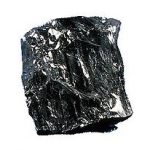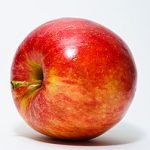Cad Atá I Do Stocasa? Posted by róislín on Dec 9, 2011 in Irish Language
(le Róislín)
Cé acu seo ab fhearr leat?
nó
Sin píosa guail agus úll.
Seo roinnt rudaí eile a bhíodh i stocaí páistí:
oráistí
milseáin
bábógaí beaga
beagáinín airgid
yóyónna
mirlíní
póiríní
Agus ar ndóigh, píosa guail don pháiste a bhí dána. Nó a chaith an iomarca ama ina “bold brazen article” i rith na bliana. Ach an amhlaidh gur tugadh píosa guail do pháiste riamh mar bhronntanas Nollag? Más amhlaidh, níor chuala mé faoi. B’fhéidir nach raibh ann ach bagairt.
Agus seo roinnt rudaí beaga nua-aimseartha a bheadh i stocaí an lae inniu:
méaróga cuimhne
ríomhairí boise
cluichí láimhe (leictreonach)
luchtairí bataire
fóin ghluaisteacha
dearbháin bhronntanais (cártaí bronntanais)
ceamaraí beaga digiteacha
Aon rud eile? Moltaí eile?
And, by the way, if you’re wondering about the “-sa” suffix in the word “stocasa,” it’s there because of the implied comparison between my Christmas stocking and your stocking. In English, the contrast would typically be suggested by making the word “your” a little louder (like Capital One’s ad “What’s in YOUR wallet?). But Irish tends to use suffixes like “-sa” and keeps the voice more level. SGF, Róislín
Gluais: boise, hand/palm-held, lit. of palm; cuimhne, memory; dearbhán, voucher; láimhe, hand-held, lit. of hand; luchtaire, charger; mirlín, marble, póirín, jack, as in the game of jacks
As for “méaróg,” another “fógra comhainm” (homonym alert):
The word “méaróg” has been around a lot longer than flashdrives. Based on the word “méar” (finger), it originally meant any “fingerlike object,” such as a short drill. It could also mean what I suppose we’d have to call a “fingerlike shape,” as opposed to a “fingerlike object,” that is “a seed-hole made with the finger.” I don’t suppose a “hole” counts as an “object,” though I’ll leave the rest of that argument to the meitifisiceoirí. A méaróg also means a “thumbrope” (i.e. a rope made by one person twisting hay or straw around the thumb). Curious, that, since it suggests a distinction between thumbropes (presumably shorter and thinner) and the standard “súgán,” of “Casadh” fame. Those would be made with an actual rópadóir or a castóir or a méarán deascáin, not simply using the thumb, and, fad m’eolais, would take two people to make. And, of course (no rest for the terminologically weary!), there’s another phrase, “súgán ordóige,” which literally uses the word “ordóg” (thumb) to specify what type of straw rope is involved.
So, duine ar bith ar an liosta – an ndearna tú méaróg (rópa) riamh? Nó ar chas tú súgán riamh? Chonaic mé daoine ag casadh súgáin ach ní dhearna mé riamh é.
“Méaróg” can also be used with “éisc” to create the word for … you guessed it, “fish-fingers” – méaróga éisc. Not that fish have fingers, ach sin scéal eile.
But what’s the homonym aspect here? All of the above have some relation to “méar” (finger), so wouldn’t be comhainmneacha as such. There is a completely different word, méaróg, meaning “a neat little girl” or “a saucy girl,” and that’s the real comhainm here.
And none of the above should be confused with “mearóg,” which is “vegetable marrow,” a squash-like vegetable, not related to bone marrow at all. Maróg a dúirt mé, no rest for the weary. Úúps, that should have been “mar a dúirt mé.”

Build vocabulary, practice pronunciation, and more with Transparent Language Online. Available anytime, anywhere, on any device.






Leave a comment: